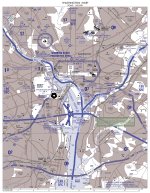The question I have is this....she may have been on the stick but the DPE should have been able to assume control before this happened....correct?? DPE'S have a way of telling you your about to screw the pooch before it happens....my experience anyway.Unless she is the reason the other 66 are dead.
(non mil)
And since the Blackhawk is a crewed aircraft she isn't the only one that fucked up.
Not really sticking up for her....just posing the question.
Busting an airspace limit is a
big deal in my little sliver of aviation .....check pilot should have seen it coming.
ETA: DPE is designated pilot examiner....not sure what the mil version is called.


